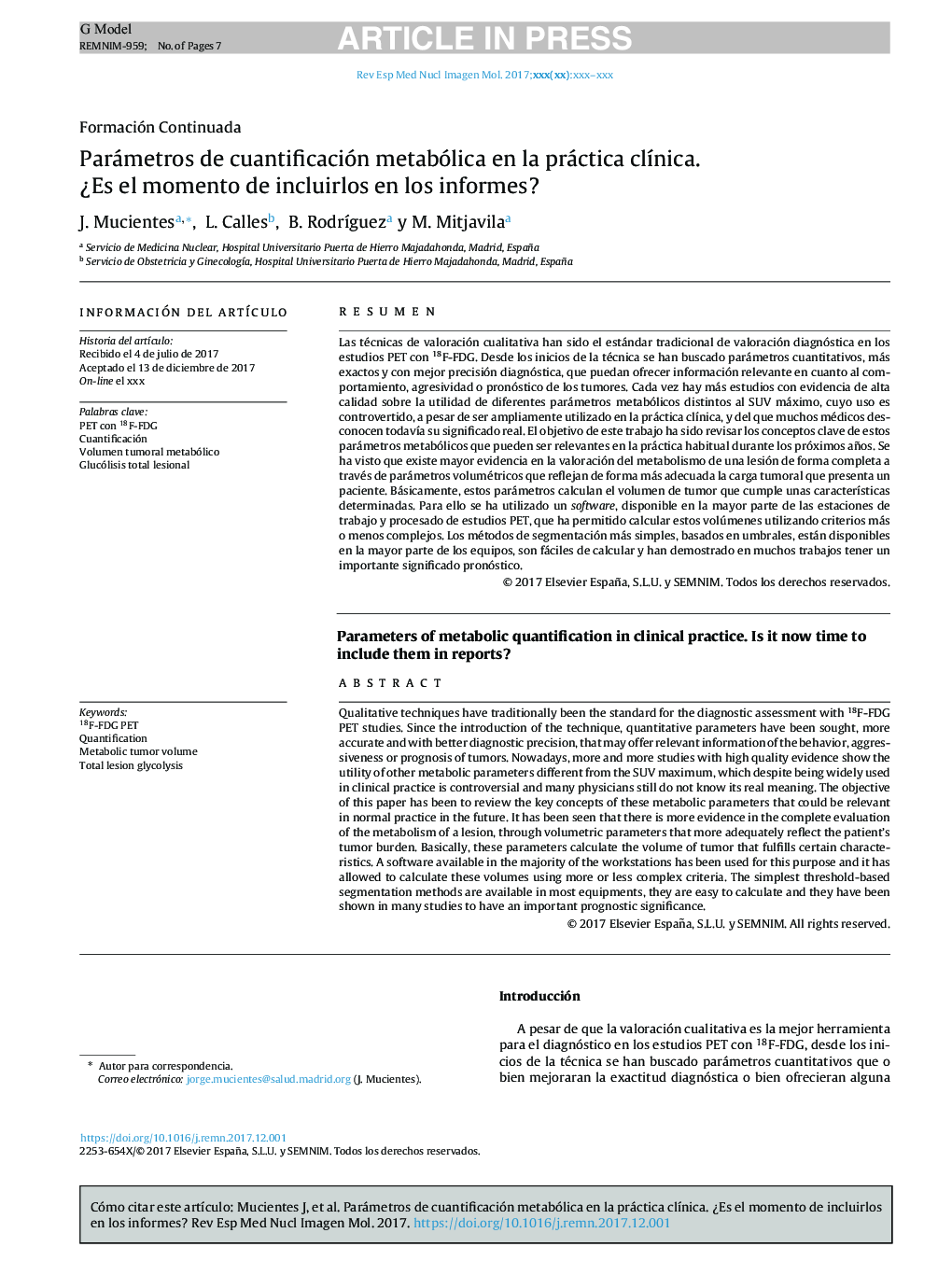| Article ID | Journal | Published Year | Pages | File Type |
|---|---|---|---|---|
| 8825732 | Revista Española de Medicina Nuclear e Imagen Molecular | 2018 | 7 Pages |
Abstract
Qualitative techniques have traditionally been the standard for the diagnostic assessment with 18F-FDG PET studies. Since the introduction of the technique, quantitative parameters have been sought, more accurate and with better diagnostic precision, that may offer relevant information of the behavior, aggressiveness or prognosis of tumors. Nowadays, more and more studies with high quality evidence show the utility of other metabolic parameters different from the SUV maximum, which despite being widely used in clinical practice is controversial and many physicians still do not know its real meaning. The objective of this paper has been to review the key concepts of these metabolic parameters that could be relevant in normal practice in the future. It has been seen that there is more evidence in the complete evaluation of the metabolism of a lesion, through volumetric parameters that more adequately reflect the patient's tumor burden. Basically, these parameters calculate the volume of tumor that fulfills certain characteristics. A software available in the majority of the workstations has been used for this purpose and it has allowed to calculate these volumes using more or less complex criteria. The simplest threshold-based segmentation methods are available in most equipments, they are easy to calculate and they have been shown in many studies to have an important prognostic significance.
Related Topics
Health Sciences
Medicine and Dentistry
Radiology and Imaging
Authors
J. Mucientes, L. Calles, B. RodrÃguez, M. Mitjavila,
